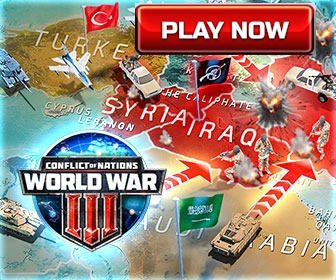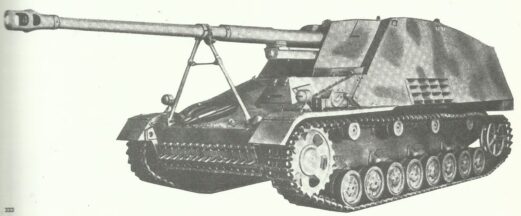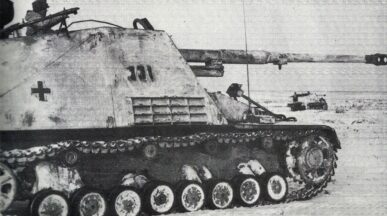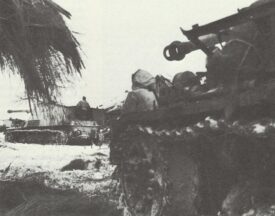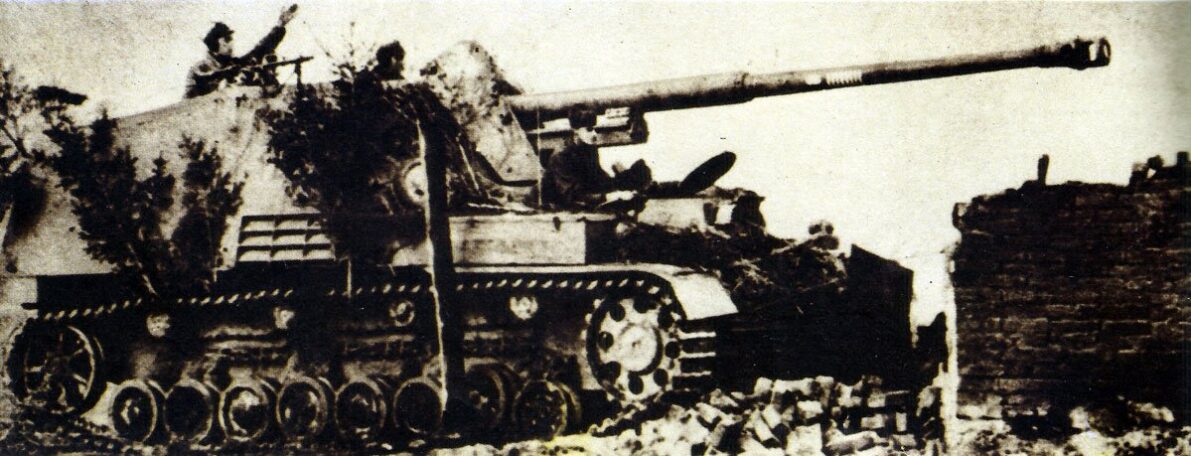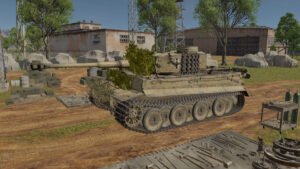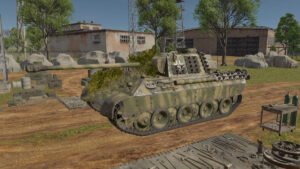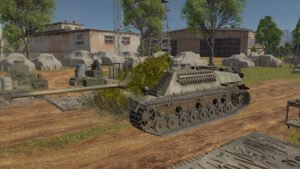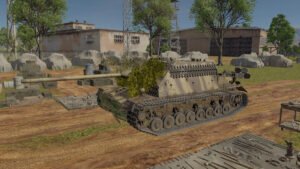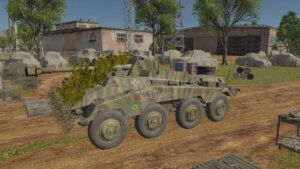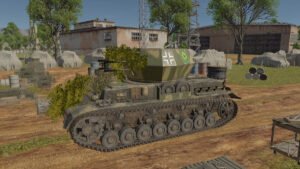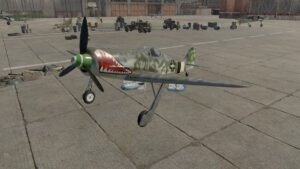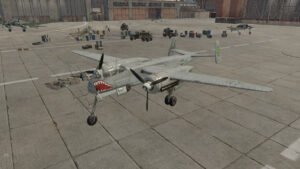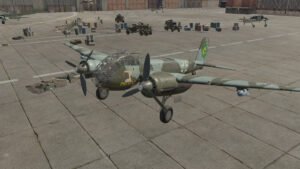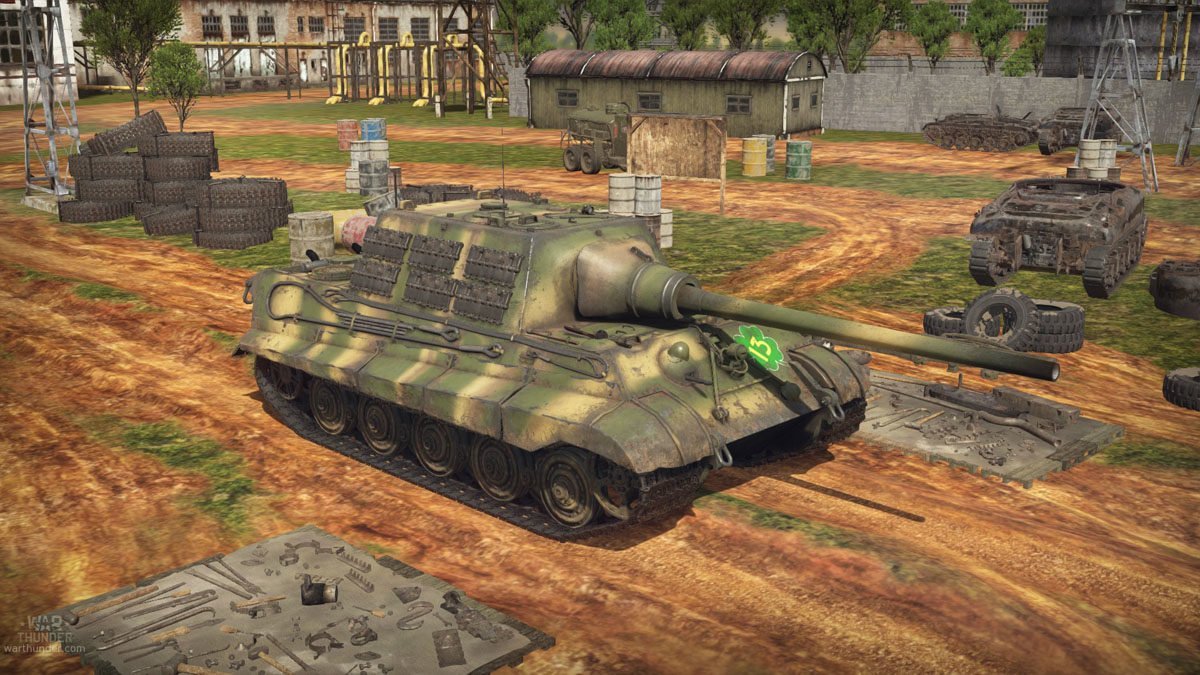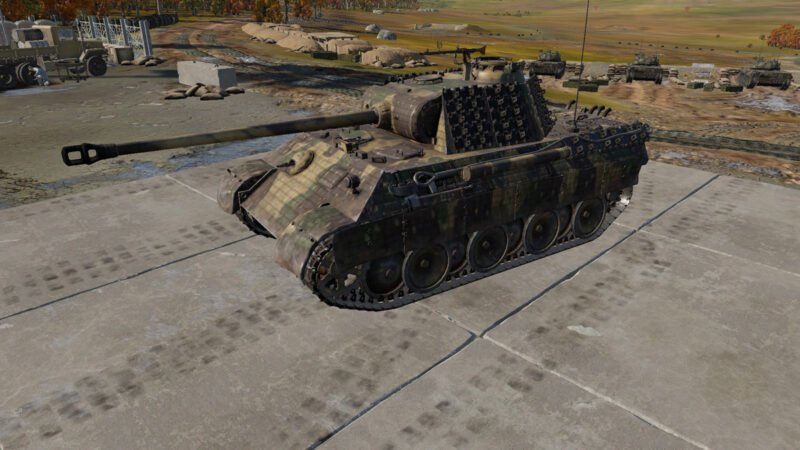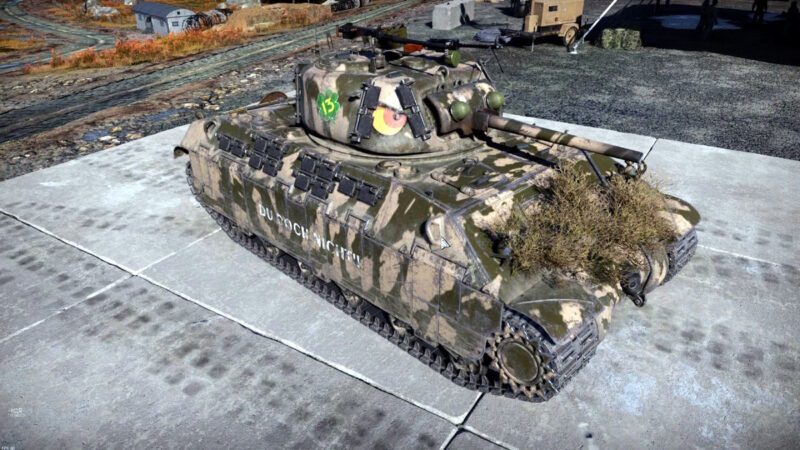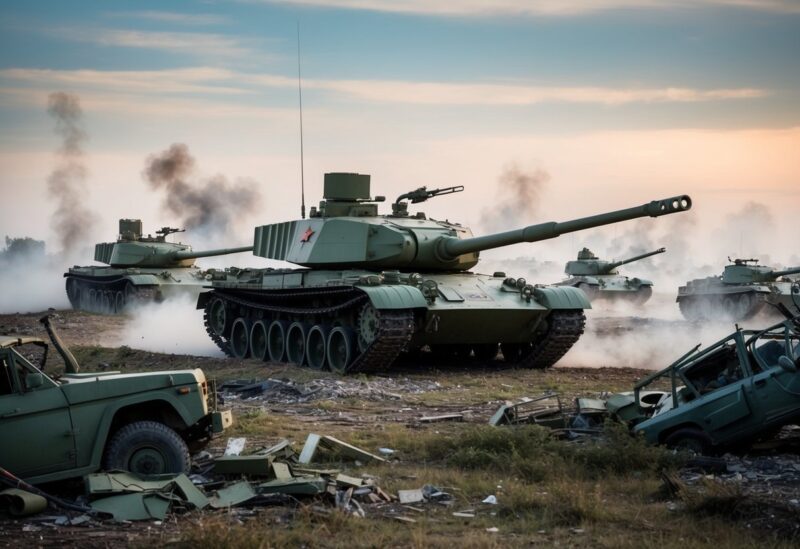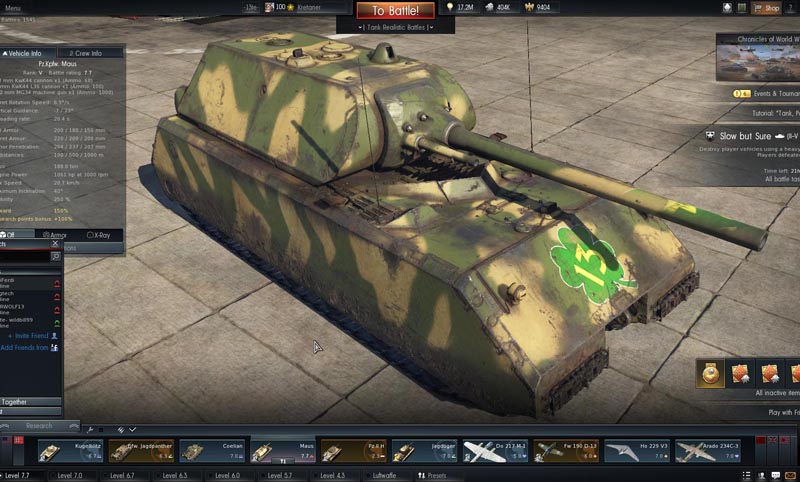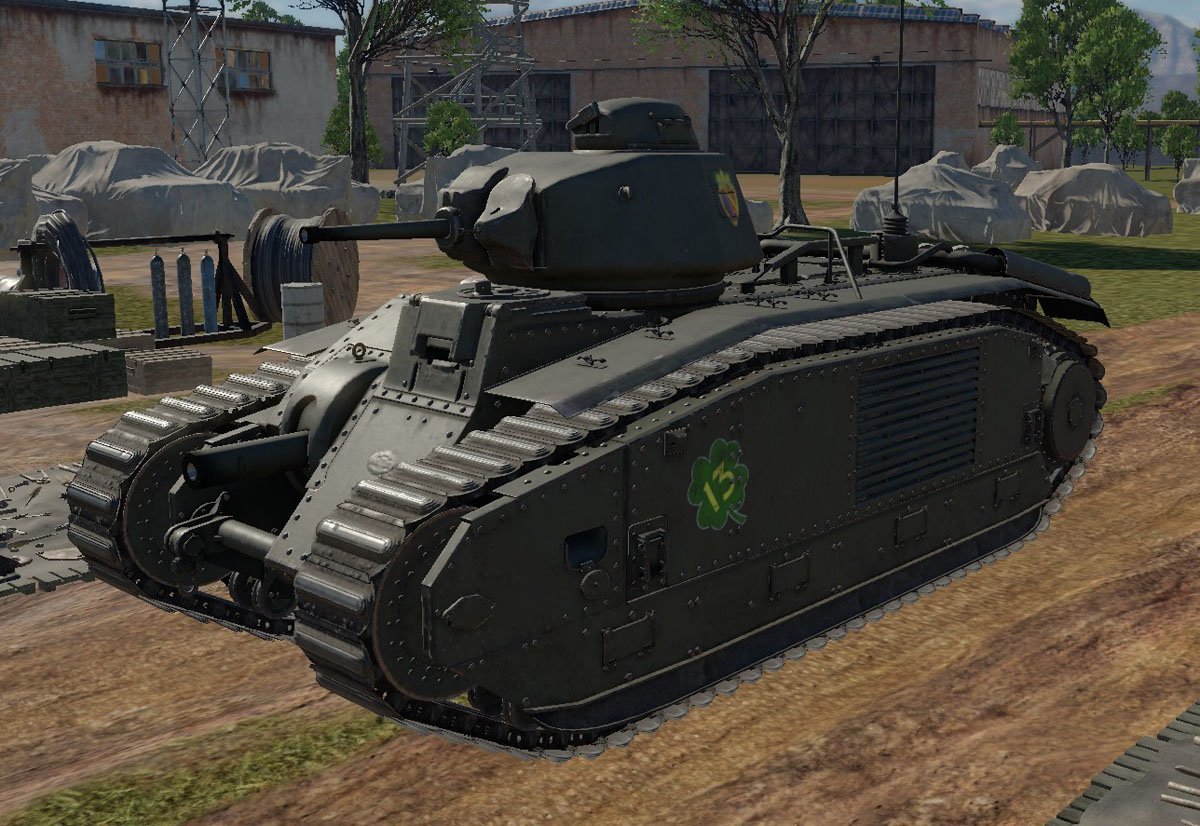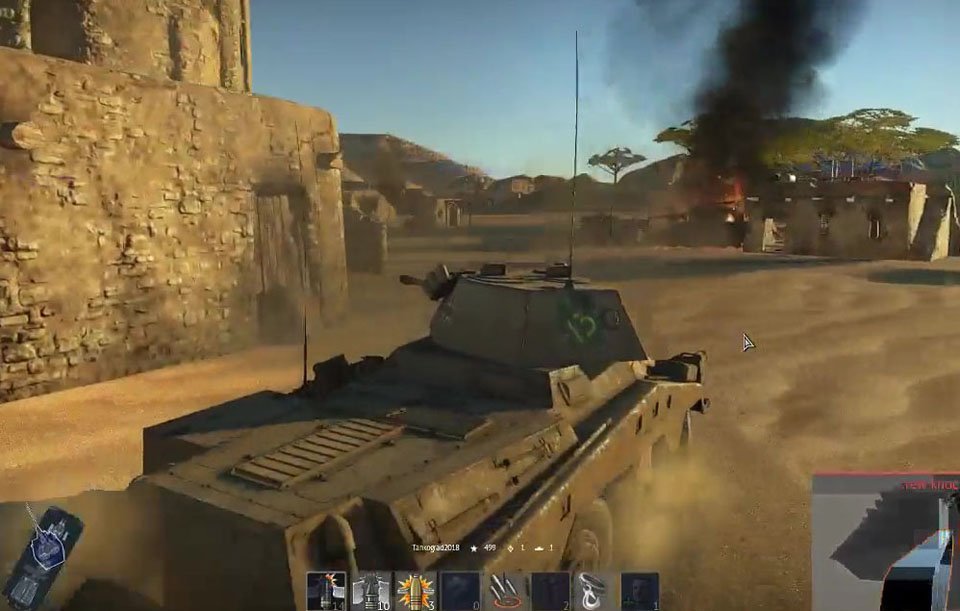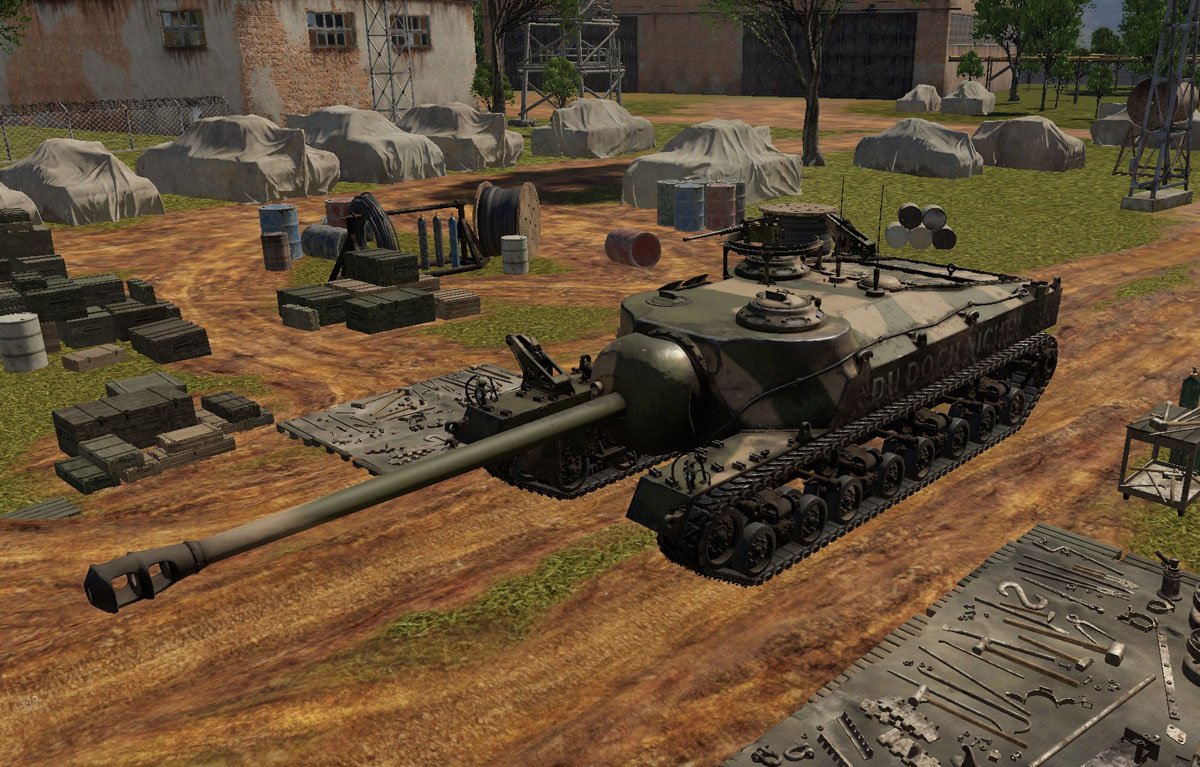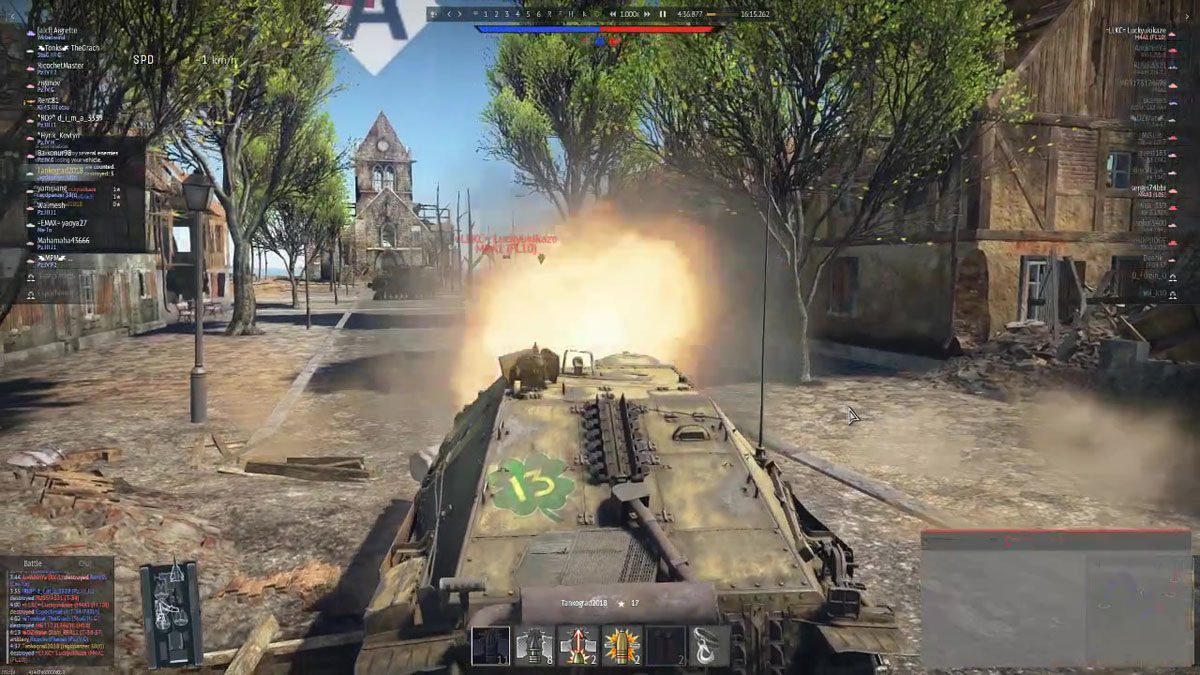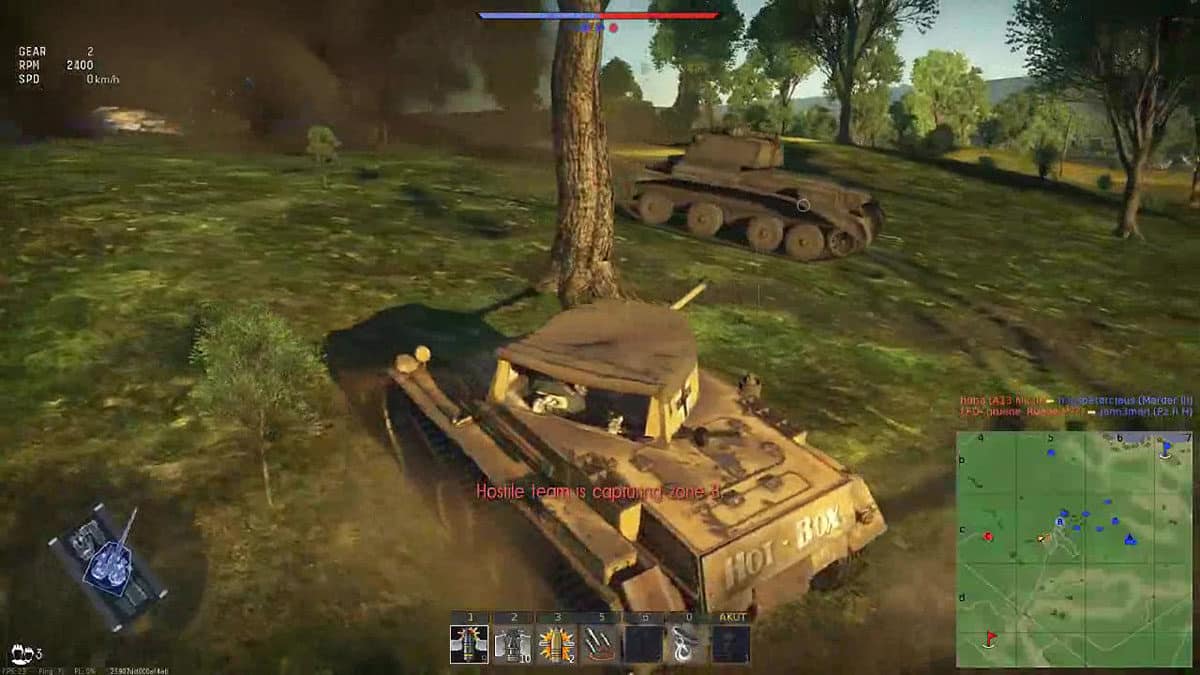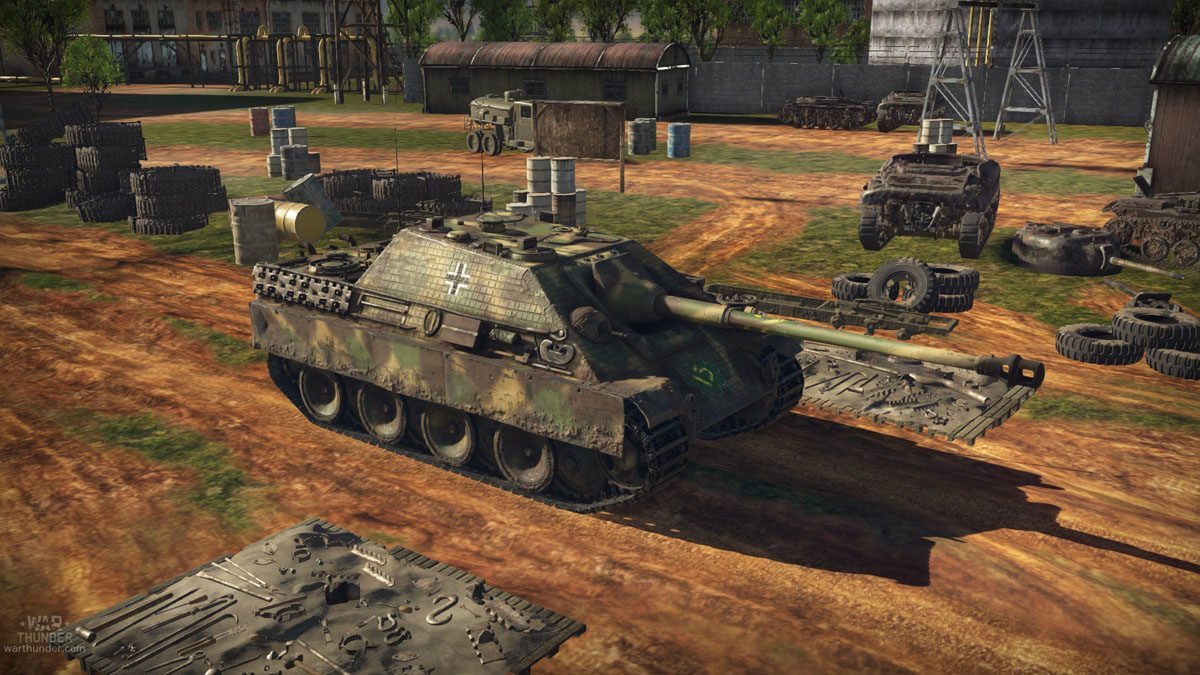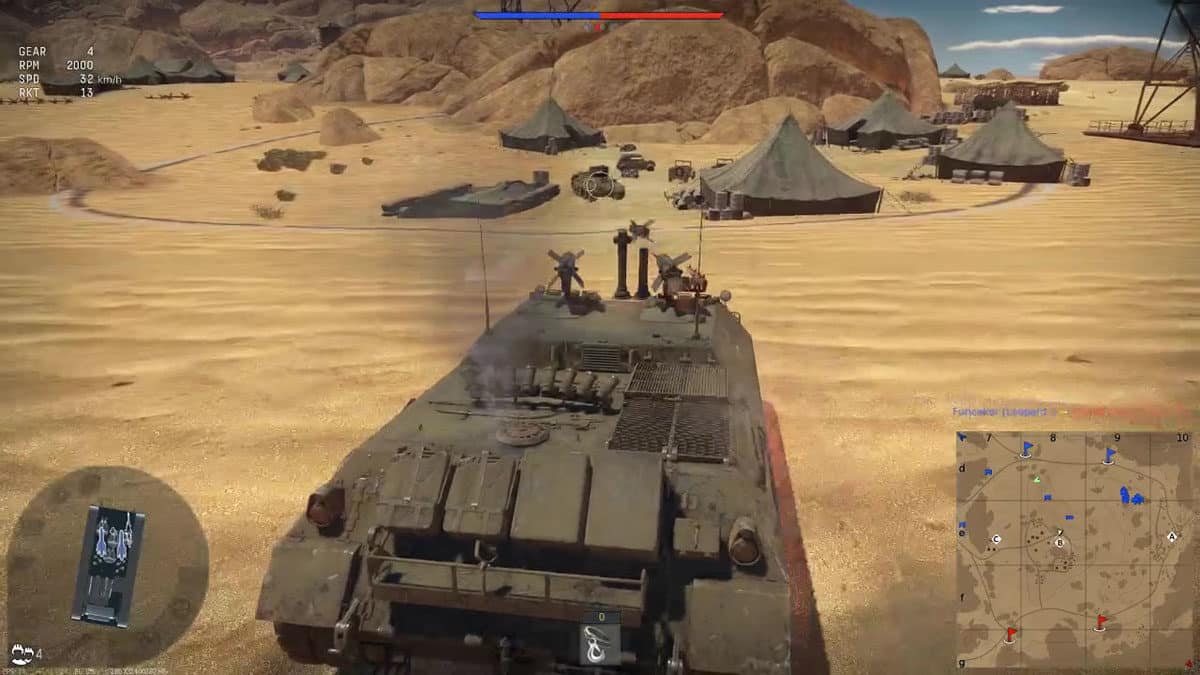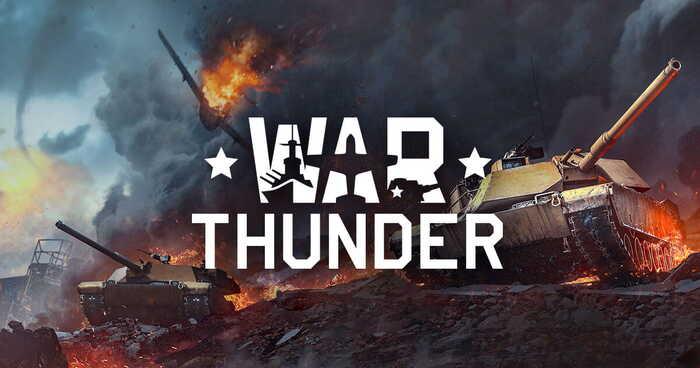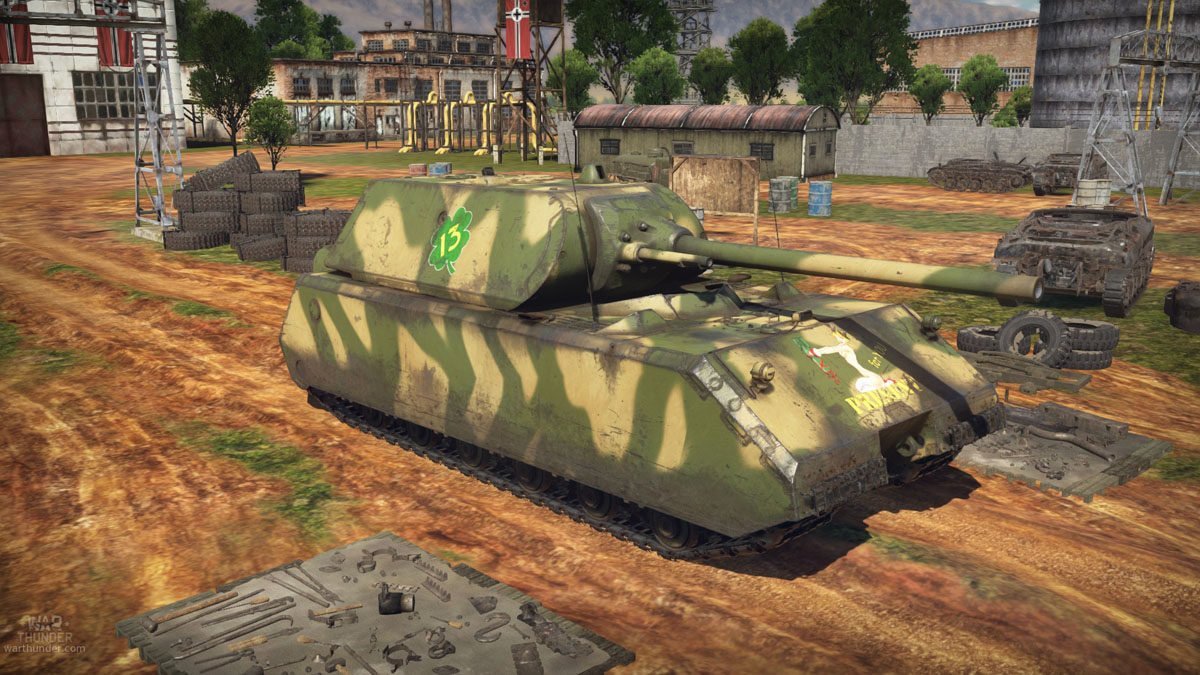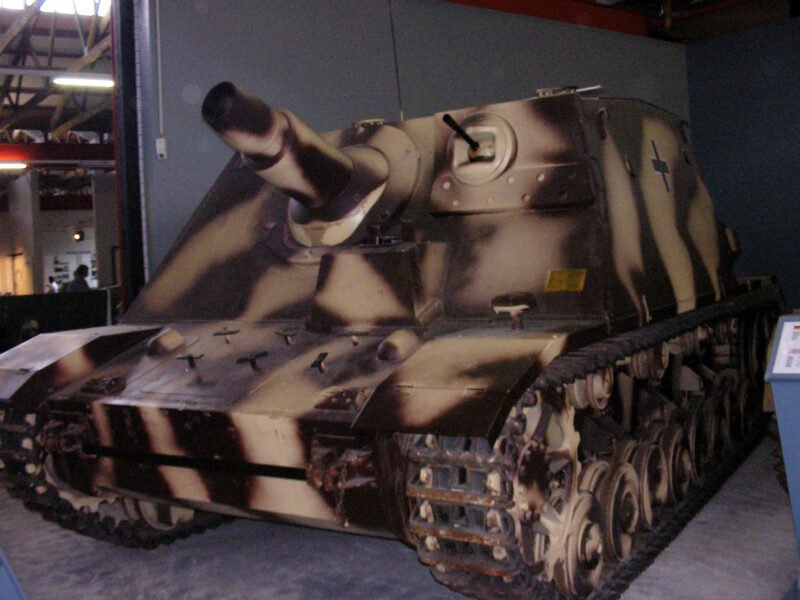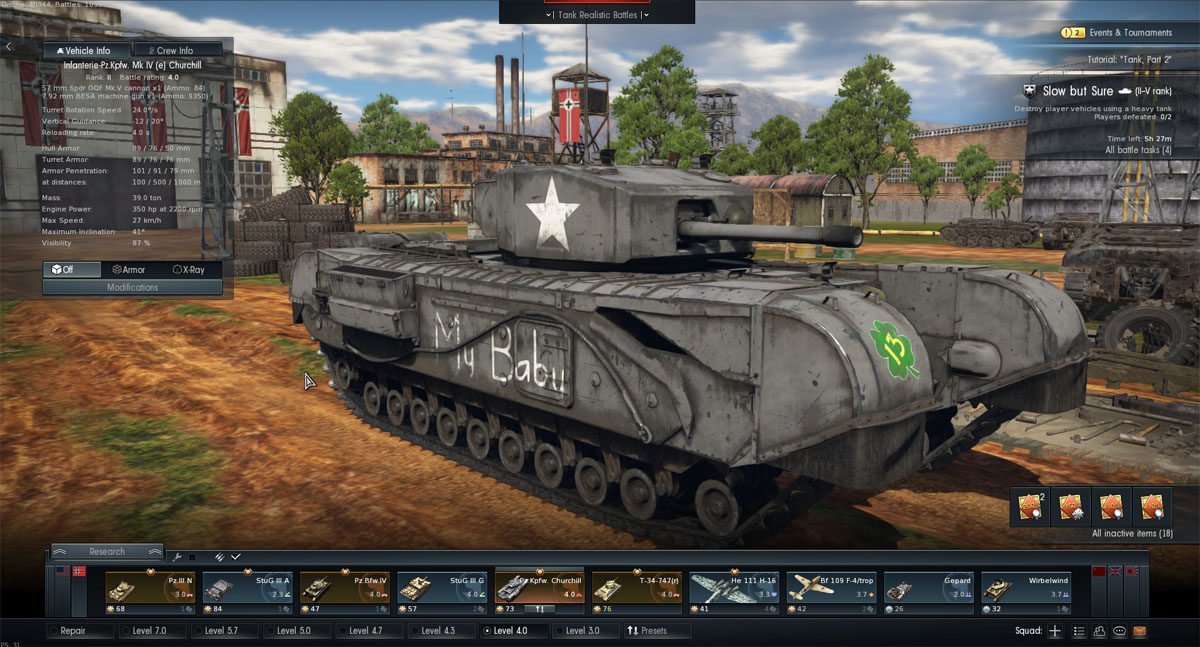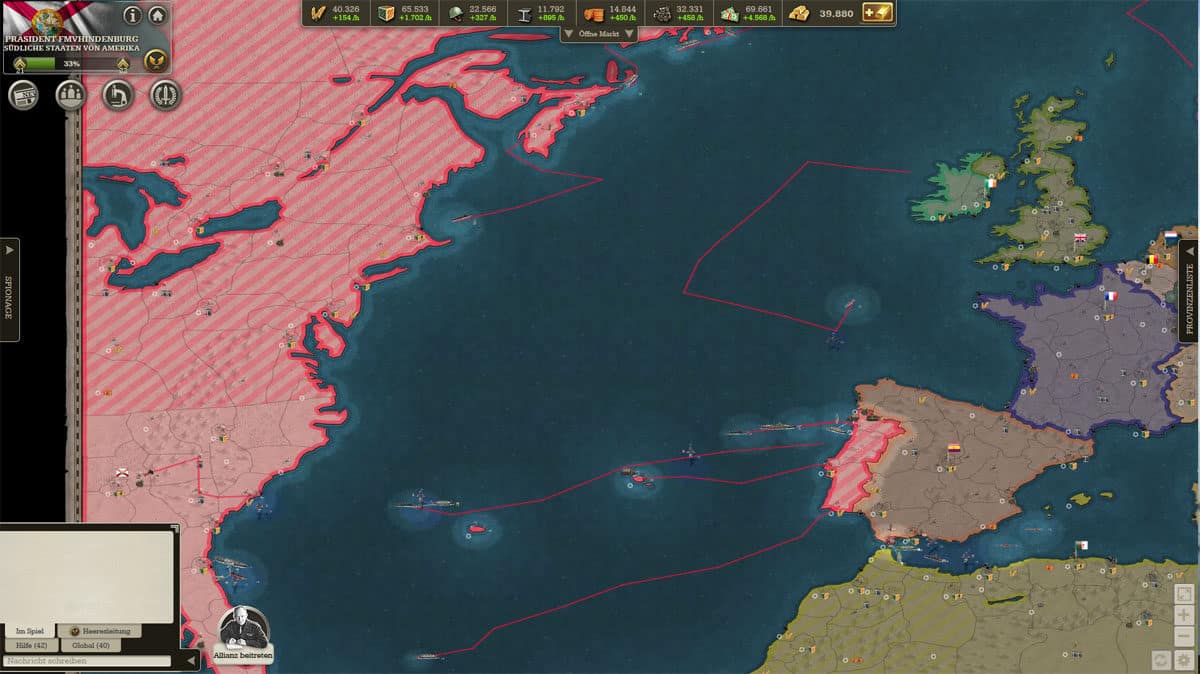8.8-cm-Pak (L/71) on chassis Panzerkampfwagen III/IV (Sf).
Service, specifications, statistics and 3d model of the tank destroyer Nashorn (Rhinoceros) or Hornisse (Hornet) and in action in the F2P game War Thunder as part of a BR 5.3 line in ‘Realistic Tank Battles’.
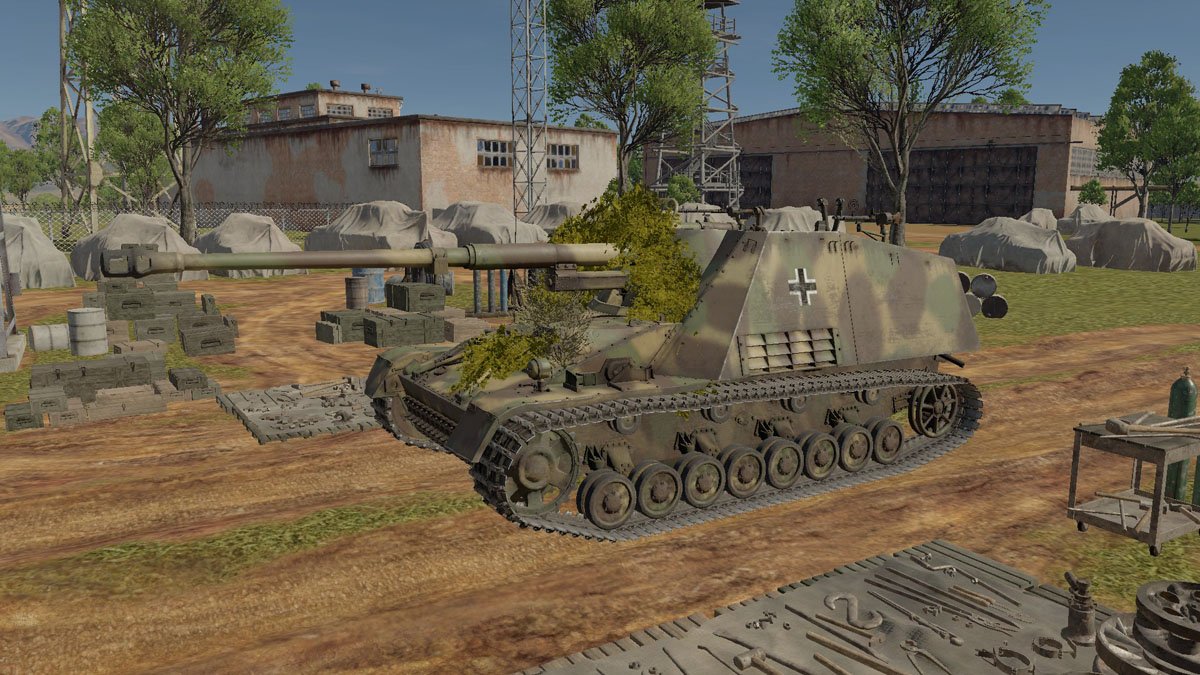
Nashorn
Table of Contents
8.8-cm-Pak (L/71) auf Fahrgestell Panzerkampfwagen III/IV (Sf)
Type: Tank destroyer.
The Nashorn (German for “Rhinoceros”) was a German tank destroyer used during World War II.
Overview
Development: It was developed in 1942 as a stop-gap solution to combat Soviet tanks on the Eastern Front.
Design: The Nashorn combined the chassis of the Panzer IV tank with the Panzer III’s engine and mounted a powerful 8.8 cm PaK 43 anti-tank gun.
Armor: It had relatively thin armor (20-30mm) to keep the vehicle light and mobile.
Crew: The Nashorn had a crew of five: commander, gunner, loader, driver, and radio operator.
Production: About 494 units were produced between 1943 and 1945.
Effectiveness: The 8.8 cm gun was highly effective against enemy tanks, capable of penetrating most Allied armor at long ranges.
Weaknesses: Its thin armor and high profile made it vulnerable in close combat situations.
Service: It saw action on both the Eastern and Western Fronts, as well as in Italy.
Names: It was initially called ‘Hornisse’ (Hornet) but was later renamed ‘Nashorn’.
Legacy: The Nashorn helped pave the way for future German tank destroyers like the Jagdpanther.
Despite its limitations, the Nashorn was considered a successful design that provided German forces with mobile, long-range anti-tank capability during the latter part of World War II.
History
In the middle of the war, a series of urgent improvisations were developed for the Wehrmacht in order to bring as many tank destroyers as possible into action. Some of these improvised vehicles performed better than others.
One of these hastily developed chassis for guns was originally intended for the heavy 15-cm field howitzer 18 and was developed as ‘Fahrgestell (gun carriage) III/IV’ from the chassis of the Panzer IV with some drive components of the Panzer III. However, despite the great demand from the artillery for this vehicle, which became known as the Hummel (‘Bumblebee’), the decision was already made in October 1942 to complete 100 of these chassis with the new 88 mm anti-tank gun Pak 43 by May 12, 1943, the planned date for the coming summer offensive in Russia.
The official name of this tank destroyer was Nashorn (‘Rhinoceros’), but the name Hornisse (‘Hornet’) was also widely used. The original order amounted to a total of 500 production vehicles, of which 494 were finally completed by March 1945.
The Nashorn was one of the so-called ‘intermediate solutions’ of the Jagdpanzer (tank destroyer) designs, because although the 88 mm anti-tank gun was behind a front armor, this front armor was relatively thin and the vehicle was open at the top and rear.
The gun mount itself was quite high, so the Nashorn clearly had shortcomings for combat use, not least because it was difficult to camouflage the tall vehicle on the battlefield or find suitable cover.
Since the vehicle was originally designed as an artillery self-propelled gun, this was less important for this task, but for a tank destroyer it was of considerable importance.
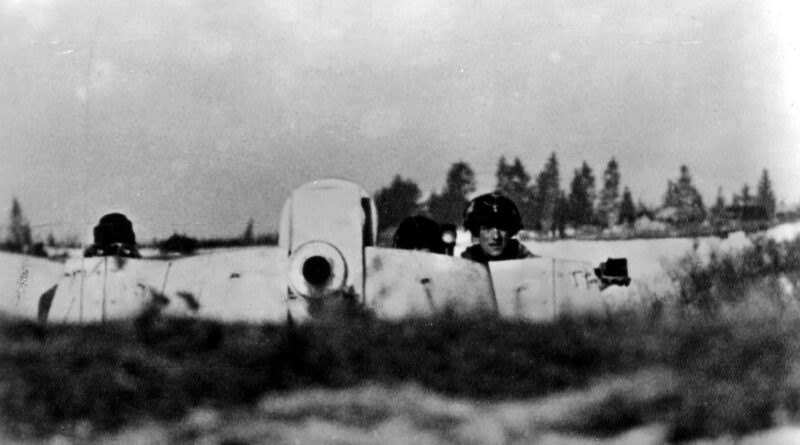
As a result, the Nashorn was often used as a ‘long-range weapon’, capable of utilizing the considerable accuracy and long-range firepower of the 88 mm Pak to engage targets at distances of 2,000 meters (2,187 yards) and beyond. Most other types of Jagdpanzer, however, fought at much shorter distances.
The engine of the Nashorn was moved forward, which created space for a large fighting compartment further back. The engine was located directly behind the gearbox and this ‘powerhouse’ was right next to the driver.
Even with the wide eastern tracks, the ground pressure of this Jagdpanzer was so great due to the heavy 8.8 cm Pak that no better armor protection was possible. In addition, armor plates were in short supply at that time, so that many production vehicles were only given unhardened steel plates.
The 8.8-cm-Pak was fixed to the floor of the combat compartment, so that the barrel was 7.35 feet (2.24 meters) above the ground, which was at least 1.97 feet (60 cm higher) than the usual 88 mm gun Flak 18, 36, 37 on cross mount.
The Nashorn had a crew of five, with only the driver sitting in a fully armored compartment. The rest of the crew was carried in the open combat compartment, with only a line cover protecting them from the weather elements.
Most of the 40 shells carried on board were in open lockers on the sides of the open combat compartment and the gunner was equipped not only with the usual sights for direct fire but also with artillery scopes. This enabled the Pak 43 to be used as a long-range artillery gun.
During the final stages of production the Pak 43/41 was installed, a weapon that could be built faster than the original Pak 43. Although it was produced in a different way than the original, it was identical in terms of ballistics.
The Nashorn carried a machine gun MG34 loose for close defense in the combat area and the crew should be equipped with at least two sub-machine guns MP40.
Most of the Nashorn self-propelled guns were produced at the ‘Deutsche Eisenwerke’ in Teplitz-Schönau and Duisburg.
In combat, it was a powerful weapon and the 88-mm-Pak makes it a potent weapon combination, but it was clearly too high and bulky for the role of a tank destroyer. Only due to the lack of better vehicles at that time, the type was continued to be built until the Nashorn was finally replaced by the Jagdpanther.
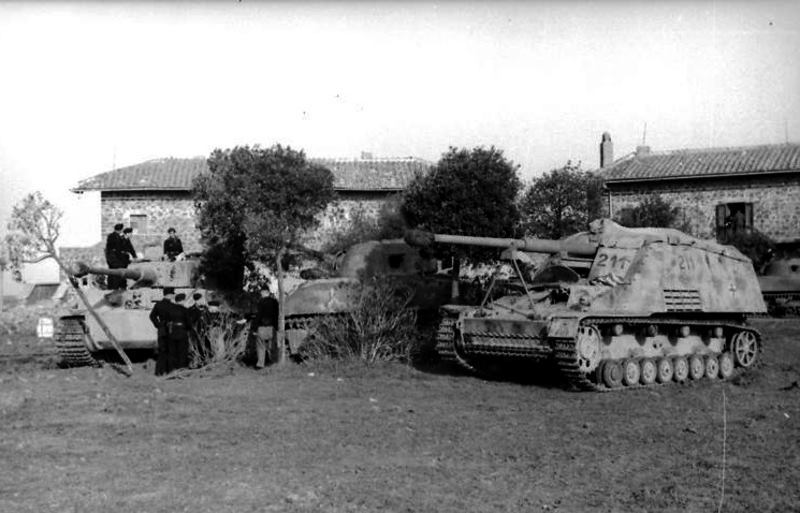
The Nashorn was delivered to the heavy tank destroyer detachments, which were independent units and directly subordinated to a corps or the army. There they were deployed at the front lines’ centers of gravity and formed a mobile, highly efficient anti-tank defense.
The first deployment was with the 655th heavy tank destroyer detachment in Russia in the summer of 1943, and five more heavy tank destroyer detachments were set up, which saw operations not only on the Eastern Front but also in Italy and the West.
Users: Germany (Wehrmacht).
Animated 3D model tank destroyer Nashorn
Specifications
Specifications:
Specification | Nashorn |
|---|---|
Type | tank destroyer |
Engine | Maybach HL120TRM |
Gearbox | 6 forward, 1 reverse |
Crew | 4 |
Length | 27 ft 8,3 in (8.44 m) over all; 19 ft 03. in (5.80 m) hull |
Width | 9 ft 4.6 in (2.86 m) |
Height | 8 ft 8.3 in (2.65 m) |
Weight | 53,793 lb (24,400 kg) |
Maximum road speed | 24.8 mph (40 km/hr) |
Cross-country speed | ? |
Fuel consumption per 100 km | 240 liters on road; 300 liters cross-country |
Fuel | 600 liters |
Road radius | 155 miles (250 km) |
Cross-country radius | 100 miles (160 km) |
Vertical obstacle | 23.6 in (0.60 meters) |
Trench crossing | 7 ft 6.6 in (2.30 meters) |
Fording depth | 2 ft 7.5 in (0.80 meters) |
Turning circle | 8.2ft (2.50 meters) |
Gradient | 30° (57 %) |
Armor:
Specification | mm | angle |
|---|---|---|
Superstructure front | 10 | 37° |
Superstructure side | 10 | 16° |
Superstructure rear | 10 | 10° |
Superstructure top | open | - |
Hull front | 30 | 20° |
Hull side | 20 | 0° |
Hull rear | 20 | 10° |
Hull bottom | 15 | 90° |
Gun shield | 10 | 37° |
Armament and Equipment:
Nashorn | Specification |
|---|---|
Main armament | 8.8-cm Pak 43/1 L/71 |
Rounds | 40 |
Traverse | -30° to +30° (by hand) |
Elevation | -5° to +20° |
Muzzle velocity Pzgr39-1 | 3,280 feet/second (1,000 m/s) |
Muzzle velocity Pzgr40/43 | 3,707 feet/second (1,130 m/s) |
Shell weight Pzgr39-1 | 22.52 lb (10.20 kg) |
Shell weight Pzgr40/43 | 16.11 lb (7.30 kg) |
Maximum fire range | on tanks c. 2,734 yards (2,500 m); as artillery 11,920 yards (10,900 m) |
Secondary armament | 1 x 7.92-mm-MG34 loose (600 rounds) |
Radio | FuG Spr d (1 km range) |
Telescopic sight | Rblf36 (range 10.900 meters for indirect fire) |
Penetration mm at 30° armor plates of the gun:
Range | Pzgr391 | Pzgr40/43 |
|---|---|---|
Penetration 100 meters | 203 mm | 237 mm |
Penetration 500 meters | 185 mm | 217 mm |
Penetration 1.000 meters | 165 mm | 193 mm |
Penetration 1.500 meters | 148 mm | 171 mm |
Penetration 2.000 meters | 132 mm | 153 mm |
Production:
Figures | Nashorn |
|---|---|
Production start | February 1943 |
Fianl delivery | March 1945 |
Price per tank | ? |
Total production figure | 494 |
Service statistics for tank destroyer Nashorn:
Year | Available | Production | Losses |
|---|---|---|---|
before 1939 | - | - | - |
1939 | - | - | - |
1940 | - | - | - |
1941 | - | - | - |
1942 | - | - | - |
1943 | - | 345 | 92 |
1944 | 263 (1/1) | 133 | 174 |
1945 | 155 (1/1) | 15 | 10 (in Jan) |
Total | - | 493 | 276 (until Jan 45) |
Nashorn in War Thunder
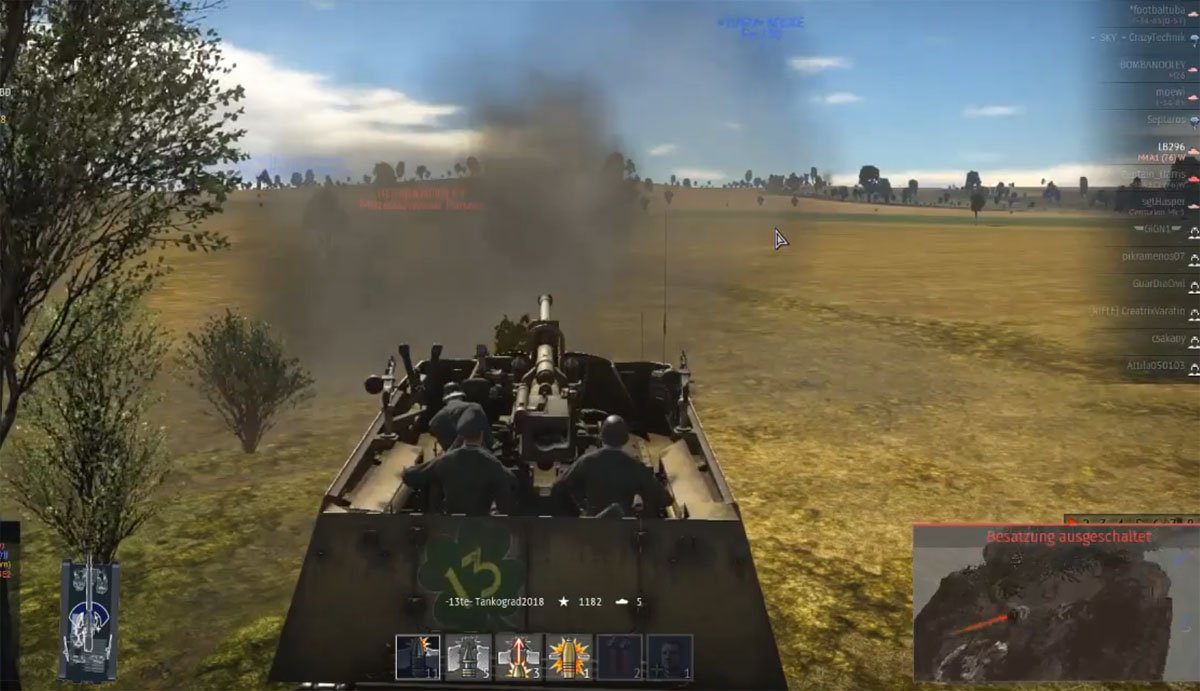
In the F2P game War Thunder the Nashorn is a freely researchable tank destroyer and is located on the Battle Rating (short BR) 5.3.
This BR 5.3 has been very popular for some time now with players who mainly play German vehicles, because besides the Tiger tank H1 the Panther tank Ausf D also reinforces this vehicle line. The two battle tanks bring along great guns as well as excellent armor protection.
The tank destroyer Nashorn should be used mainly on maps with a long shooting distance, such as Kursk or Maginot Line. Here the powerful cannon and its excellent aiming optics with double magnification compared to other German tank destroyers of this ‘Battle rating’ come into their own, while the disadvantages of weak armor and oversized vehicle are not so important. The only thing you have to watch out for is enemy low-flying aircraft, because six or eight Browning 0.5in heavy machine guns of a P-51 Mustang or P-47 Thunderbolt quickly turn a Nashorn into a sieve.
Video of an action with Nashorn in War Thunder
The fighting power of the Nashorn when used correctly, i.e. fire over long distances, can be seen in the following replay video of a ‘realistic battle’ with seven kills on Kursk. Before that, however, its partner from the BR 5.3, the Panzer IV/70(A) tank destroyer, is deployed at short battle distances in Normandy. Even eight kills are achieved within about 6 minutes !
Victory rate and Up-tiers
In the last weeks the author has played 129 ‘Realistic Ground Combat’ with the German line of BR 5.3. Of these, 73 battles were won, that is 56.5 percent.
The author achieved 234 kills, that is slightly more than 1.8 kills per battle.
Only 11 of the battles were fought as top tier on the BR 5.3 (i.e. 8.5 percent), of which the German team with allies won seven times (63.6 percent victory rate).
In 48 of the fights, the German team was upgraded by one BR step to BR 5.7 (37 percent of the fights), of which 29 (60.4 percent) were won.
21 battles were fought on BR 6.0 (16 percent), of which 13 (just under 62 percent) were won.
49 times the author was a ‘low-animal’, i.e. he was on BR 6.3 and with almost 38 percent this is also the most frequent circumstance. With 24 victories (just under 49 percent), this was also the least celebrated success.
All in all, despite the good vehicle line for ‘Battle Rating’ 5.3, i.e. not an overly optimal range and with increasing upgrading, success and gaming fun clearly decrease. But for German vehicles in War Thunder still one of the best lines at the tiem this article is written.
Which vehicle line has proven itself for Germany BR 5.3 ?
The following is a summary of a proven line for Germany on BR 5.3, using the maximum possible number of 10 vehicle slots.
As always, the right mix of main battle tanks for combat or conquest scenarios as well as aircraft, tank destroyers and anti-aircraft vehicles is crucial for a successful outcome of the battle.
In addition to the Nashorn, the following vehicles are also suitable:
The Tiger tank H1 is the heavy battle tank of this vehicle line. Its gun is very effective and its armor is useful, especially when positioned at an angle to the enemy. As a top animal in a battle on BR 5.3 its effectiveness can hardly be surpassed.
The medium main battle tank is the Panther tank Ausf D. An excellent gun with high penetrating power combined with an excellent frontal armor make this vehicle an extremely effective battle tank for this line. Only the poor turret rotation means that the entire vehicle together with the turret has to be turned towards the enemy during combat. Also, from the side, even if only slightly angled, one should not be hit, just as frontally into a non-angled turret.
The Panzer IV/70(V) is the overall best tank destroyer for the vehicle line. Unlike the Nashorn it can be used on almost all occasions. Its low silhouette, its excellently slanted frontal armor, the highly effective cannon of the Panther and additional smoke candles make it a dangerous opponent even at short distances. The flat tank destroyer, which can also be well hidden by camouflage material, is often overlooked and many frontal hits are ‘swallowed’ by the excellent armor layout. The cannon is able to deal with almost all enemies even from front side and when up-tiered to a high battle rating, it is the ideal vehicle to not stand out too much and still have a good chance in battle.
The Panzer IV/70(A) is the Alkett version of the previously described Jagdpanzer. In War Thunder this premium vehicle has only the BR 4.7, so that it can often be entered into combat for considerably less entry points than the Panzer IV/70(V).
Although both vehicles are identical in almost all respects, the PzKpfw IV/70(A) has a much worse protected and higher front, because it used an unmodified chassis of the PzKpfw IV Ausf J. This vehicle is therefore used as a reserve tank destroyer with the line when no more PzKpfw IV/70(V) can be spawned.
Those who do not own this premium vehicle can alternatively add a Hetzer or Jagdpanzer IV for this role.
The SdKfz 234/4 Pakwagen (anti-tank gun carrier), which is as well known as hated by the players in the opposing team, serves as a high-mobile tank destroyer and especially as a fast vehicle to occupy CAP points. Its 7.5cm Pak with ammunition from the last year of the war can also handle most enemy vehicles in this range of the ‘Battle Rating’ and can also spot them, marking them on the map for your players and giving you points and discounts on aircraft spawning when these are destroyed. So it’s a very useful vehicle, especially for opening the match.
However, the ‘Pakwagen’ is a premium vehicle, which can only be unlocked during special promotions. If you don’t have it, you can use the normal Puma variant (BR 2.7) instead.
The well-known ‘Flakpanzer Wirbelwind’ (Whirlwind) serves as an anti-aircraft vehicle and can also take out lighter armored vehicles, especially from the side and from behind. There is still the Ostwind for this BR range, but this one does not fire as fast and has a lower penetrating power against tanks. Therefore, it is best to use the Wirbelwind as a standard anti-aircraft tank and to equip it with an extra voucher for respawning a second vehicle.
The Fw 190 D serves as a fighter and fighter-bomber for the line. In addition to the premium version D-13 used here, there are also the freely available D-12 and D-9 in the research tree.
With the 500 kg bomb almost every tank can be eliminated well and in high speed air combat the fighter is also quite successful.
The ‘Uhu’ (Eagle Owl) was a night-fighter and serves as a ground attack aircraft in War Thunder. With its heavy machine guns it and can easily destroy the thinly armored allied tank destroyers, as well as medium tanks like the T-34-85. It is also very feared in frontal combat and many P-47 Thunderbolt pilots has already felt this. But it is not overly agile and has no rear armament, so that an enemy fighter in the rear usually means the end. Since it has only BR 4.3 and has no payload, it can always be brought for a maximum of 480 spawn points (even less if previously successful reconnaissance with the SdKfz 234 is done) and a double mission with a voucher is therefore possible more often.
The He 219 is a premium aircraft and those who do not have it can easily make do with an Me 110G (Br 3.7) with a 1,000 kg bomb, likewise powerful frontal armament and a rear gunner.
The Ju 188 serves for the vehicle line as a bomber and can load a 1,800 kg bomb, among smaller bombs, which is one of the safest and most effective methods of taking enemy ground vehicles out of the match.
If you don’t know this F2P tank and plane game yet, you can download War Thunder here for free and will receive extra 50 Golden Eagles premium currency as well as a Rank I premium plane or tank:
More about War Thunder
References and literature
Kraftfahrzeuge und Panzer der Reichswehr, Wehrmacht und Bundeswehr (Werner Oswald)
Encyclopedia of German Tanks of World War Two (P.Chamberlain, H.L.Doyle)
Panzer und andere Kampffahrzeuge von 1916 bis heute (Christopher F. Foss, John F. Milsom, Colonel John Stafford Weeks, Captain Georffrey Tillotson, Richard M. Ogorkiewicz)
Krieg der Panzer (Piekalkiewicz)
The Encyclopedia of Weapons of World War II (Chris Bishop)



